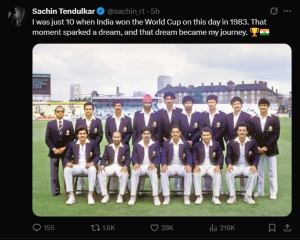The term "Gupt," originating from Hindi, translates to "Hidden." Gupt Navratri, unlike its more widely known counterparts, Sharad Navratri and Chaitra Navratri, remains a discreet observance, practiced by select individuals and communities across India. While it may not boast the widespread fanfare of other Navratri festivals, those who partake in Ashada Gupt Navratri do so with unwavering devotion, adhering to its rituals with the utmost dedication.

Ashadha Navratri is considered an auspicious period for meditation and spiritual practices. This Navratri does not have any additional festivities and celebrations.
The Ashada Gupt Navratri takes place during the Hindu month of Ashada, typically spanning June and July in the Gregorian calendar. It coincides with the onset of the monsoon season, a time when people find respite from the scorching summer heat. Consequently, devotees express their gratitude to the Goddess (Devi) for her benevolence in ushering in the monsoon rains.
In 2025, the Ashada Gupt Navratri commences on Thursday, June 26, and concludes on Friday, July 4.
According to Drik Panchang, the Ashada Gupt Navratri begins on June 26th and culminates on July 4th.
Key timings to note:
The significance of Ashada Gupt Navratri lies in its relative obscurity. The limited awareness surrounding this Navratri among devotees amplifies the intensity of their devotion, facilitating a swifter connection with the divine Shakti.
Furthermore, Ashada marks the beginning of the monsoon season. The rains symbolize a cleansing of the Earth, both physically and spiritually. Similarly, observing the Gupt Navratri fast is believed to purify individuals, aiding in emotional release and the revitalization of their inner energies.
It is believed that fasting during Ashada Navratri and faithfully performing its rituals can alleviate life's challenges, as Maa Durga is more receptive to devotees' prayers and supplications during this time.

The Ghatasthapana, or Kalash Sthapana, marks the commencement of every Navratri celebration. This ritual involves placing a Kalash, filled with water and adorned with coconut and mango leaves, within the home temple. Devotees also undertake the task of cleaning their home temples, acquiring new attire for the idol of Maa Durga, and presenting her with offerings of fruits, flowers, and 'Shringaar' (ornaments).
During the puja, a diya (lamp) filled with ghee is lit, accompanied by the fragrance of incense, as devotees chant mantras or recite the names of the Goddess.
Since Navratri is dedicated to the Navdurga (nine forms of Durga), each day is dedicated to a specific manifestation of Maa Durga, with corresponding mantras chanted accordingly.
Throughout the nine days and nights of Navratri, devotees adhere to a strict fast during the day. They break their fast with a light, sattvic meal following their evening puja. Those observing the fasts for Ashada Gupt Navratri are required to maintain a vegetarian diet, refraining from consuming onion, garlic, non-vegetarian food, alcohol, and any other indulgent or Tamasic food.
The ritual of the Akhand Jyot is another important aspect of the Ashada Gupt Navratri. On the first day of Navratri, during the Ghatasthapana, a diya is lit in the home temple and maintained continuously, ensuring that the wick never burns out and the oil never runs dry. This 'Akhandjyot' illuminates the temple and the home throughout the nine days of Navratri.
Unlike the Sharad Navratri or Chaitra Navratri, which are characterized by vibrant celebrations and rituals in temples and communities, Ashada Navratri is a more subdued affair.
Its 'Gupt' (hidden) nature means that fewer people are aware of its observance, transforming it into a period for silent worship of the Shakti and seeking blessings in a tranquil manner.
Newer articles
Older articles
 Evil Eye Amulet: Protective Charm or Portal to Dark Forces? A Cultural Debate
Evil Eye Amulet: Protective Charm or Portal to Dark Forces? A Cultural Debate
 Jayden Seales Fined by ICC for Provocative Gesture During Australia Test Match
Jayden Seales Fined by ICC for Provocative Gesture During Australia Test Match
 Paralympic Archer Sheetal Devi's Viral Video Shows Her Driving Car with Feet, Defying Expectations
Paralympic Archer Sheetal Devi's Viral Video Shows Her Driving Car with Feet, Defying Expectations
 Broad Slams India's Team Selection After Headingley Test Loss, Calls for Roster Tweaks at Edgbaston
Broad Slams India's Team Selection After Headingley Test Loss, Calls for Roster Tweaks at Edgbaston
 Umpire Controversy Erupts: West Indies Coach Sammy Questions Holdstock's Consistency in Barbados Test
Umpire Controversy Erupts: West Indies Coach Sammy Questions Holdstock's Consistency in Barbados Test
 Sachin Tendulkar: 1983 World Cup Win Sparked My Cricket Dream at Age 10
Sachin Tendulkar: 1983 World Cup Win Sparked My Cricket Dream at Age 10
 Jaiswal's Fielding Woes: Ex-India Star Kaif Points to Potential Cause for Dropped Catches in England Test
Jaiswal's Fielding Woes: Ex-India Star Kaif Points to Potential Cause for Dropped Catches in England Test
 Team India's England Tour: Rahul's Sleep Strategy, Coaching Rituals, and Coffee Culture Revealed
Team India's England Tour: Rahul's Sleep Strategy, Coaching Rituals, and Coffee Culture Revealed
 Suryakumar Yadav Successfully Completes Sports Hernia Surgery, Eyes Return to Cricket
Suryakumar Yadav Successfully Completes Sports Hernia Surgery, Eyes Return to Cricket
 Gujarat Cricket Set to Launch T20 League in 2025-26 Season
Gujarat Cricket Set to Launch T20 League in 2025-26 Season